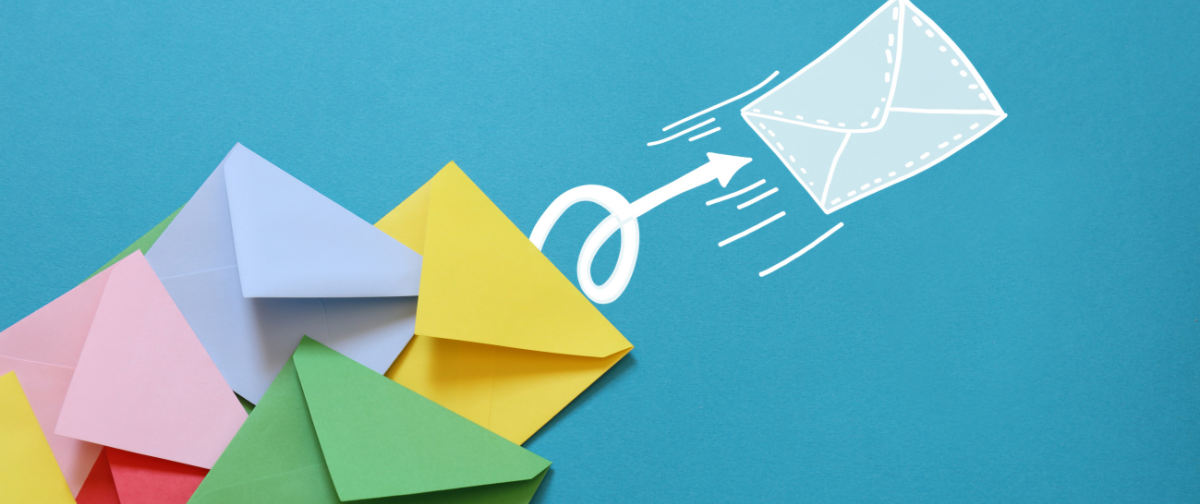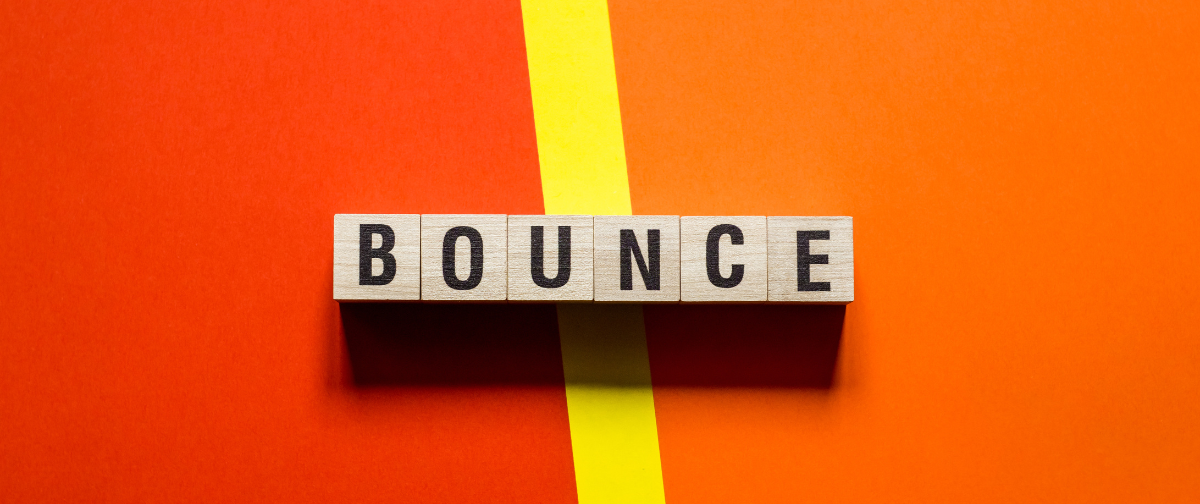We’re passionate about email here at SMTP2GO and we know that writing a GREAT email isn’t always easy. Award-winning marketer, best-selling author and all-round email guru, Sam Bennett, offers some fantastic tips on how to write emails people read.
Much like Sam, we love email as a communication tool: it’s personal, flexible and adaptable. It’s also the only form of communication that’s 100% controlled by the consumer: they decide when to open the mail and whether or not to respond/ interact with it. They can choose to opt-in or opt-out. The ball is always in their court. There’s also that crazy ROI…
As Sam says: “Across all industries, the average ROI of email is 3800%. That is every dollar that a business spends on email marketing brings in $38.”
Pretty impressive, eh?!
So, how to unlock the power of emails?
Before getting started, take a moment to consider what kind of email you’re writing (is it an inquiry email, a transactional one or a marketing message?) and WHY you’re writing it. Be super clear on this. What is the end goal for this email? What would you like it to achieve? The type of email should determine the style and tone used. The type of email should also be reflected in the subject line.
Inquiry emails should be pointed and specific, who you are and what you want. Nothing more!
Subject: [Quick question] Can we move Monday’s Zoom to Wednesday?
Transactional emails are numerous and our inboxes are often full of them, so make the subject line searchable by using a keyword.
Subject: 2021 Annual Budgets / Subject: August Invoice Enclosed
Marketing and sales subject lines need to grab and seduce!
Subject: Do you want silkier hair?
When writing any kind of email it’s important to avoid the following:
- Apologizing (you’ve done nothing wrong!)
- Making assumptions (we’re not in the recipient’s head)
- Talking about yourself (it’s tempting, we know!)
- Humor (it’s SO hard to get right and so easy to get wrong…)
Be clear and bold, not pushy or whiny
Asking questions in your email is a great way to engage your readers and makes it about them – and IT IS all about them! Check how many of your sentences start with ‘I’ compared with ‘you’. Consider having three ‘yous’ for every ‘I’. Also, try to avoid using ‘we’ as it can sound a little wishy-washy.
“Make sure you know what you want the outcome or next step to be, and make sure that they know what the outcome or next steps should be. This combination of focus on them, empathy for them and aspiration for their best self, combined with your unique, authentic voice, will help you write compelling emails that people will love to read.”
Graceful interruption
A great way of engaging a recipient’s attention is if you can use your email to remind a recipient of something they want. Sam offers the following example:
“Hi, specific person. Want ABC desired outcome? Let me show you how to get it without XYZ, thing they don’t want. Do this action step now.”
It’s simple but very effective!
How to get a reply
Sending an email and then not getting a response is frustrating but always check three things:
- Did they know a response was needed? Did you make it clear in the first or last sentence of the email? “Please respond to me by this date.”
- Did they know when a response was needed? “Please respond to me by X date because I need to XYZ by Friday.”
- Did you give them an easy, obvious way to respond? So did you tell them, please respond to this email, or please click here to RSVP, or please say yes to this calendar invite, etc.
Did you really make it super obvious what it was you wanted? If you’ve done all those things and you still haven’t heard back again, don’t take it personally. Sam suggests resending your original email with this sentence on top:
“Hi, so-and-so. I just wanted to bubble this up in case it had slipped through the cyber cracks. Yours, Sam.”
“Make sure that your message is cheerful and non-blaming and that it gives them a plausible out like slipped through the cyber cracks. If the person still doesn’t respond, keep trying. Also maybe try another medium like a phone call, a text or a personal message. Either way, keep going until you get a response. Never give up.”
Tell a story
Sam firmly believes that if you know how to tell a great story, your emails will always get opened.
“Grasping the critical elements of great storytelling isn’t that hard. First, make it a story. Each story has a beginning, a middle and an end. Here’s this person who has this problem, here’s the action they took. Here’s them living happily ever after. Works every time.
Now, this element is a bit advanced, but it’s so powerful, I have to tell you about it. It’s the power of curiosity. Human curiosity is one of the most powerful forces on the planet. So, if at the beginning of your story, you can make an unusual claim, or ask a question, or stimulate their curiosity in any way, they’re yours.
How did Jennifer’s hands go from looking like an 80-year-old’s to a 20-year-old’s? Curious about the secret ingredient that calms dry skin? Once upon a time, there were some dry hands.
Think of your copy as a fairytale. Your customer is the hero and you are the faithful guide that gets them to their promised land.”
The three most important words
This may be the most important lesson of all! You. Get. Because. And repeat. You, get, because!
“If you really dig into understanding this, you can use it in your emails, of course, but also your social media, your talks, your meetings, even your family communications. It’s just three simple words: you, get, because. Simple, right? You, get, because.
You: who is ‘you’? To whom are you speaking? And do they know that you mean specifically to be speaking to them? Identify the ‘you’ correctly and they will raise their hands and feel involved right away.
Get: what do they get specifically?
Because: why did I get this?
You may have heard about the famous sociological study around the word “because”. It goes a little something like this: a bunch of workers were in line to Xerox some papers and the study was that these people came up and tried to cut in line. And if they just said, ‘hey, can I cut in line?’ in general, the response was no. But if they said ‘hey, could I cut in line, because my boss really needs this quick?’ or some other “because” people got much more inclined to let them go in front, even when the “because” was as weak as ‘hey, could you let me cut in line, because I need to make copies?’ I mean, everybody in that line needed to make copies, but when a person asked and added a “because” everyone got way more willing to help them out.
That is the power of you, get, because. So be sure to evaluate all your communications, especially your emails, and make sure that it’s crystal clear who is the ‘you’ that you’re talking to? What do they get? Everybody always wants to get something. What did they get and why? What is the “because”?”
You. Get. Because. Pop it on a post-it note and stick in on your desk!
Some key email do and don’ts
Ensure your email has clarity, stick to one topic per email and if you need to make more than one point about that one topic, use a numbered list. If you have two topics, write two emails.
Don’t try to be too clever or funny: The thing about electronic communication is it is almost impossible to discern tone and humor. Be cheerful, be pleasant and be clear. Save the jokes for the in-person banter.
Don’t use jargon! If your average bright nine year old cannot understand your email, write it again.
Never start off with an apology. Say ‘thank you’ instead. ‘Thank you for being patient as I did the research.’
Never assume the reader has an opinion about you. ‘You’re probably wondering why I haven’t sent my regular weekly newsletter.’ No, we have NOT been wondering about you at all 😐
If Sam discovers any email crimes, as listed above, she will slam you in email jail!
For even more fantastically useful email writing tips, Sam Bennett’s online course can be found in LinkedIn Learning.






